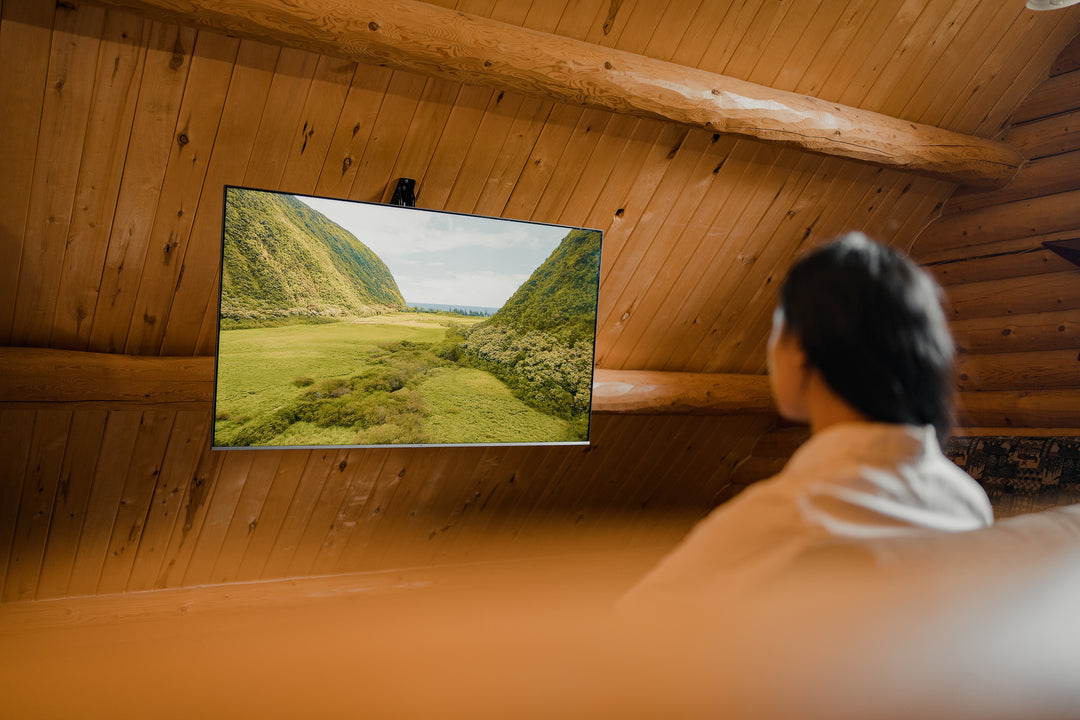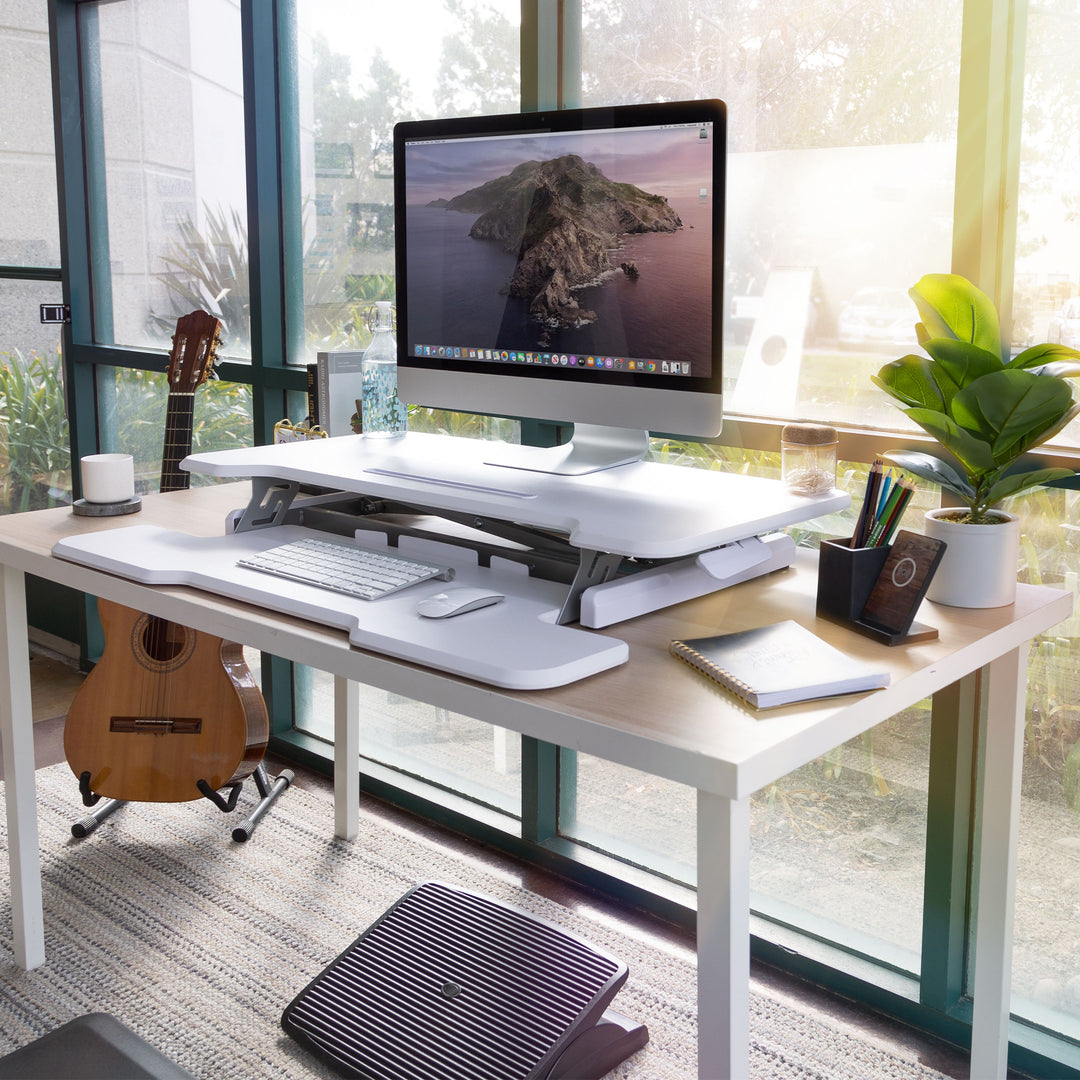Best TV Size For Rooms

The best TV size for a room depends on various factors, such as the viewing distance, room size, and personal preference. The size of your room is a crucial factor in determining the right TV size. If you have a small room, you may want to opt for a TV with a smaller screen size to avoid overwhelming the space. On the other hand, if you have a large room, a bigger TV may be more appropriate to create an immersive viewing experience.
How To Determine TV Size For a Room
Choosing the right TV size for a room can depend on several factors, including the size of the room, the distance between the TV and the seating area, and personal preferences. Here are some general guidelines to consider before making a purchase:
Measure the room: Measure the distance from the TV wall to the seating area. This will give you an idea of how much space you have to work with. If you have a small room, a TV with a smaller screen size (e.g., 32 inches) may be more appropriate. However, if you have a larger room, you may want to consider a larger screen size (e.g. 65 inches).
Determine the viewing distance: A general rule of thumb is that the TV should be placed at a distance that is 1.5 to 2.5 times the diagonal screen size of the TV. For example, if you have a 50-inch TV, the viewing distance should be between 6.25 and 10.4 feet. Whether you will mount your TV on the wall using a TV mount or place it on a stand or table will also influence your viewing distance.
Personal preferences: Ultimately, the TV size you choose should also depend on your personal preferences. If you want a more immersive viewing experience, you may want to go for a larger screen size. If you prefer a more minimalist look, a smaller screen size may be more appropriate.
It's important to note that these guidelines are just general recommendations and may not apply to everyone. Ultimately, the size of the TV you choose should depend on your personal preferences and the specific requirements of your room.
Best Size TV For Living Room
The best size TV for a living room depends on the size of the room and the desired viewing distance, but also what programs you like to watch most on your TV. Here are some general guidelines to consider:
Viewing distance: The distance between the TV and the viewer should be at least 1.5 times the diagonal screen size of the TV. For example, if you have a 55-inch TV, the minimum viewing distance should be 82 inches (6.8 feet).
Room size: For a small room, a TV with a screen size of 32 to 43 inches should be sufficient. For a medium-sized room, a TV with a screen size of 43 to 55 inches should work well. For a large room, a TV with a screen size of 55 inches or larger would be appropriate. With regards to TV placement, you can save space by mounting your TV on the wall.
Personal preference: Ultimately, the size of the TV that you choose will also depend on what kind of viewing experience you are looking for. Some people prefer a larger screen for a more immersive viewing experience, while others may prefer a smaller screen that doesn't dominate the room.
Aspect ratio: You should also consider the aspect ratio of the TV. Most modern TVs have a widescreen aspect ratio of 16:9, which is good for watching movies and TV shows. However, if you watch a lot of sports or play video games, you may want to consider a TV with a higher refresh rate and a narrower aspect ratio, such as 21:9.
Best Size TV For Bedroom
The best size TV for a bedroom will depend on various factors, such as the size of the bedroom, the distance between the TV and the bed, and your personal preference. Here are some general guidelines:
Consider the size of your room: The size of your TV should be in proportion to the size of your room. A smaller room will typically require a smaller TV to avoid overpowering the space, while a larger room may require a larger TV to fill the space.
Determine the viewing distance: The distance between the TV and the bed is also important. As a general rule, the viewing distance should be about 1.5 to 2 times the diagonal size of the TV. So, for example, if you have a 50-inch TV, the viewing distance should be between 75 and 100 inches, or about 6 to 8 feet.
Consider your personal preference: Ultimately, the size of the TV that's best for you is a very personal decision. Some people prefer a larger TV for a more immersive experience, while others may prefer a smaller TV that's less obtrusive, especially in the bedroom. Also, think about whether you prefer to have your TV mounted on the wall or place it on a TV stand or furniture.
Based on these guidelines, a 32 to 43-inch TV is generally a good choice for a smaller bedroom with a viewing distance of 6 to 8 feet. A 50 to 55-inch TV may be more suitable for a larger bedroom with a viewing distance of 8 to 10 feet.
What Size TV For a 14x16 Room?
The recommended TV size for a 14x16 room would depend on the viewing distance and personal preferences. As a general rule of thumb, the TV should be big enough to provide an immersive viewing experience without overwhelming the room.
One way to determine the appropriate TV size is to consider the viewing distance, which should be about 1.5 to 2.5 times the diagonal length of the TV screen. For example, if you plan to sit about 8 feet away from the TV, a 55-inch or 65-inch TV screen would be appropriate.
However, personal preference plays an important role in choosing the size of the TV. While larger TVs provide you with a more immersive experience, a smaller screen might just be the right choice for what you need.
What Size TV For 12x12 Room?
As a general rule of thumb for every room size, the TV should be big enough to provide an immersive viewing experience without overwhelming the room. One way to determine the appropriate TV size is to consider the viewing distance, which should be at least 1.5 times the diagonal length of the TV screen. For example, if you plan to sit about 6 feet away from the TV, a 43-inch or 50-inch TV screen would be appropriate. Ultimately, the best TV size for a 12x12 room would depend on your personal preferences and viewing habits. It is recommended to test different sizes and distances to find the best fit for your needs.
Best Size TV For a Dorm
The recommended TV size for a dorm room would depend on the size of the room and the viewing distance. As dorm rooms are typically small, it is important to choose a TV that is appropriate for the space.
For a standard dorm room, a TV with a screen size of 32 inches would be appropriate. This size would provide an immersive viewing experience without overwhelming the room. However, if the viewing distance is closer, a smaller TV may be appropriate.
It is important to note that some dorms may have restrictions on the size of TVs allowed in the room. Therefore, it is recommended to check with the dormitory rules and regulations before purchasing a TV.
Additionally, some students may prefer to use a computer or laptop to watch movies and TV shows in their dorm room. In this case, a monitor with a screen size of 24 inches or larger would be appropriate.





